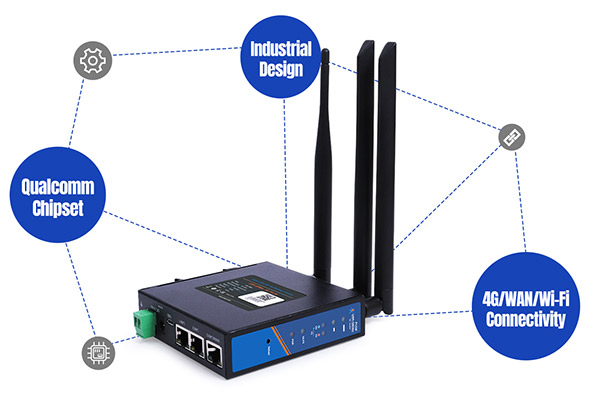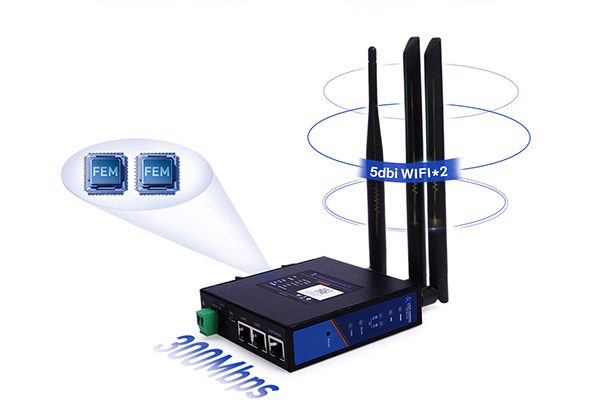In the field of Industrial Internet of Things (IIoT), Lte 4g router play a crucial role in connecting various devices and systems to ensure stable data transmission and reliable communication. Among these Lte 4g router, antennas are an indispensable component, especially when routers are equipped with two antennas, which serve significant purposes. As a senior research and development engineer in the field of industrial IoT, I will briefly explain to traditional industry professionals and IoT industry insiders the primary functions of the two antennas in Lte 4g router.
Firstly, the two antennas in Lte 4g router enhance signal reception and transmission capabilities. Antennas serve as the bridge for routers to communicate wirelessly with the external world, responsible for receiving signals from other devices or networks and transmitting signals from the router. By equipping Lte 4g router with two antennas, they can enhance signal coverage and strength in multiple directions, thereby improving communication stability and reliability. This is particularly important in industrial environments, where complex electromagnetic interference and physical obstacles often affect signal transmission quality. By increasing the number of antennas, routers can better cope with these challenges and ensure smooth data transmission.

Secondly, the two antennas enable signal diversity and diversity reception. In wireless communication, signals may be affected by multipath effects, attenuation, and interference due to the diversity of signal propagation paths and environments. By configuring two antennas, Lte 4g router can utilize the spatial diversity characteristics of antennas to receive signals from different directions simultaneously, thereby reducing the impact of these factors. This diversity reception technology can improve signal anti-interference capabilities, reduce error rates, and enhance communication quality.
Furthermore, the two antennas can support MIMO (Multiple Input Multiple Output) technology. MIMO is a technology that utilizes multiple antennas for simultaneous data transmission at both the sending and receiving ends, significantly increasing the capacity and spectrum utilization of wireless communication systems. By implementing MIMO technology through two antennas in Lte 4g router, higher data transmission rates and better signal quality can be achieved within the same frequency band. This is crucial for industrial applications that require processing large amounts of data and conducting real-time communication.

Lastly, the two antennas assist Lte 4g router in achieving better load balancing and fault recovery capabilities. In industrial environments, due to the diversity of devices and the complexity of network topologies, certain devices or links may experience failures or congestion. By configuring two antennas, Lte 4g router can flexibly adjust signal transmission paths and methods, distributing traffic across different links or devices to achieve load balancing and fault recovery. This enhances the overall network reliability and stability, ensuring the continuity and security of industrial applications.
The two antennas in Lte 4g router play crucial roles in enhancing signal reception and transmission capabilities, enabling signal diversity and diversity reception, supporting MIMO technology, and achieving load balancing and fault recovery. For traditional industry professionals, understanding the functions of these antennas will help them better comprehend and apply industrial IoT technology. For IoT industry insiders, having a deep understanding of these technical details will assist them in optimizing network design, improving communication performance, and driving the further development of industrial IoT.